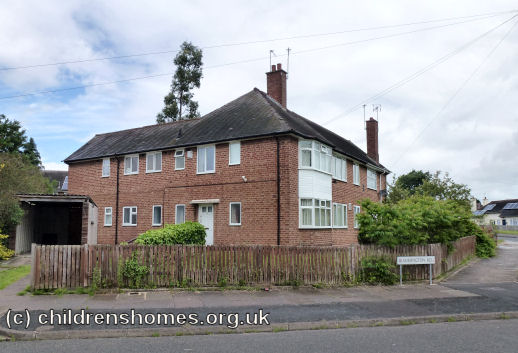The Barnardo Story
The End of the Homes
In the 1950s and early 1960s, Barnardo's made significant progress in taking on board the evolving trends in providing care for disadvantaged children. In fact, by the mid-1960s, fewer than half of the 8,000 or so children in its care actually lived in the homes that it operated. The bigger proportion were living, with various forms of Barnardo's support, with their own mothers, or with relatives or foster parents. However, many of the charity's staff and supporters still viewed the running of traditional children's homes as being its core activity. Despite the recommendations of the Curtis Report, the new homes opened by Barnardo's during this period were often still in large houses set apart from their local communities such as Hatherley Brake near Cheltenham (1950), Elizabeth Bishop House at Warwick (1957), and Tudor Bank at Birkdale (1958). This was often in stark contrast to the activities of local councils who had taken over the responsibilities of the poor law unions in 1930, including their often extensive provisions for pauper children. The growing number of children's homes provided by councils were now far more likely to be along modern lines — small in size and integrated into their local neighbourhoods. Typical of these, pictured below, was the home on Admington Road, Sheldon, opened by the Birmingham City Council in 1952 to house eight children plus house-parents.

Former council children's home, Admington Road, Sheldon, 2013. © Peter Higginbotham
A new course for Barnardo's was set in 1965 by its recently appointed General Superintendent, Mr V.L. Cornish. He proposed that, in light of the substantial provision of children's accommodation now being made by many local authorities, the charity should run down its own branch homes and direct more of its resources into new areas where the needs of children were not yet being met. In addition to adoption and fostering, these could include more specialised work with groups such as the physically handicapped, intellectually impaired, emotionally disturbed and behaviourally maladjusted.
This change in emphasis was marked, in January 1966, by a change in the organisation's name from "Dr Barnardo's Homes" to just "Dr Barnardo's", shortened again in 1988 to "Barnardo's". Another significant event was the charity's momentous decision to leave the its historic base at Stepney Causeway and relocate its administrative headquarters to a purpose-built office block at the Village Home site in Barkingside.
Despite much internal resistance and wrangling within Barnardo's, the increasing weight of professional opinion against residential care made change inevitable. Accordingly, the winding down of Barnardo's traditional homes went ahead with around ninety being closed between 1969 and 1980, the last going in 1989. Barnardo's change in emphasis was also indirectly aided by the 1970 Local Authority Social Services Act which led to council children's departments being subsumed under new social services departments. The change resulted in many former local authority staff with child-care expertise being recruited by organisations such as Barnardo's.
From the 1970s onwards, Barnardo's continued to develop its work in areas such adoption and fostering, the provision of family support centres especially in deprived areas such as inner cities, work with young offenders, and the growing concerns relating to children affected by sexual abuse and HIV/AIDS.
Except where indicated, this page () © Peter Higginbotham. Contents may not be reproduced without permission.


